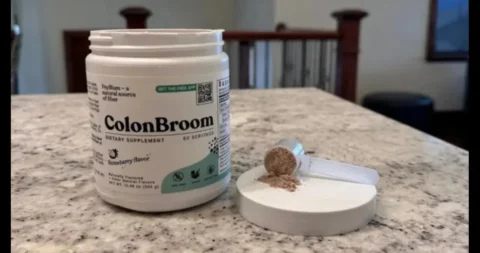Let’s face it—taking care of someone with complex medical needs isn’t always easy. When it comes to stoma care and medication management, training is a game changer. Whether you’re a healthcare worker or a family caregiver, understanding how to do things the right way is critical.
This guide walks you through two essential areas: Stoma care training and train the trainer in medication. Think of it as your personal roadmap to mastering caregiving with confidence and compassion.
What is a Stoma?
A stoma is an opening on the abdomen created surgically to allow waste (urine or feces) to exit the body. This is usually necessary when part of the digestive or urinary system is diseased or damaged.
Types of Stomas
There are three main types of stomas:
- Colostomy: Opening from the colon
- Ileostomy: Opening from the small intestine
- Urostomy: Opening for urinary drainage
Each type comes with its unique care needs, and that’s where stoma care training plays a crucial role.
Why Proper Stoma Care is Crucial
Poor stoma care can lead to infections, skin irritation, and severe discomfort. In contrast, good care promotes healing, boosts confidence, and drastically improves quality of life for the patient.
Stoma Care Training: The Core Components
This training goes far beyond just learning how to change a pouch. It’s holistic and patient-centered.
Understanding the Patient’s Needs
Every patient is different. You need to:
- Recognize their physical limitations
- Understand their emotional state
- Adjust care routines accordingly
Practical Hands-on Techniques
This includes:
- Emptying and changing stoma bags
- Cleaning the stoma site
- Using protective barriers
- Applying adhesives correctly
Maintaining Hygiene and Preventing Infections
Sterility and cleanliness are non-negotiables. Training emphasizes hand hygiene, disinfectant use, and safe disposal of waste.
Emotional Support and Counseling
Living with a stoma can be emotionally overwhelming. Training covers:
- Counseling techniques
- Encouraging independence
- Teaching coping strategies
Train the Trainer in Medication: What It Means
Ever heard the saying, “Teach a person to fish”? That’s exactly what Train the trainer in medication does. Instead of training everyone individually, you train leaders who then train others.
The Need for Training the Trainers
- Ensures consistency in medication practices
- Spreads expertise faster
- Builds a self-sustaining education system
Key Responsibilities of a Trainer
Trainers must:
- Master clinical protocols
- Be great communicators
- Adapt their teaching methods to different learners
Curriculum Structure for Medication Training
A solid curriculum should be structured and comprehensive. Here’s what it often includes:
Medication Administration Protocols
- Reading prescriptions
- Administering oral, topical, and injectable drugs
- Timing and dosage accuracy
Dealing with Side Effects and Allergic Reactions
Trainers need to teach how to:
- Spot early signs of adverse reactions
- Administer antidotes when required
- Escalate emergencies correctly
Record-Keeping and Reporting
You’ll learn the art of:
- Accurate documentation
- Legal responsibilities
- Reporting incidents or non-compliance
Who Should Take These Trainings?
Wondering if these programs are for you? If you fall into one of these groups, the answer is yes.
Healthcare Professionals
- Nurses
- Doctors
- Paramedics
Family Caregivers
Caring for a loved one at home? Training will give you both skills and peace of mind.
Support Workers and Home Aides
You’re the unsung heroes. With training, you become even more effective and empowered.
Benefits of Comprehensive Training Programs
Let’s break down the big wins of stoma and medication training.
For Patients
- Better health outcomes
- Fewer complications
- Greater emotional resilience
For Healthcare Systems
- Reduced hospital readmissions
- Lower costs
- Improved patient satisfaction
Challenges Faced During Training Implementation
It’s not all smooth sailing. There are a few bumps on the road.
Lack of Resources
Not every facility has the money or manpower to run extensive programs. Online modules and mobile apps are helping bridge this gap.
Resistance to Learning
Some people—especially those not used to formal education—may resist training. Interactive and visual learning helps reduce this friction.
How to Choose the Right Training Program
There are tons of programs out there. So how do you pick the best?
Certification and Accreditation
Make sure the program is:
- Recognized by medical boards
- Offers certification upon completion
Online vs. In-Person Training
Online is flexible, in-person is more immersive. Choose based on your schedule and learning style.
Best Practices in Stoma and Medication Training
Want to supercharge your learning? Here are some golden rules.
Interactive Learning Modules
Gone are the days of boring slideshows. Choose programs that offer:
- Videos
- Simulations
- Quizzes and case studies
Continued Professional Development
Learning never stops. Look for programs offering:
- Refresher courses
- Workshops
- Mentorship opportunities
The Future of Healthcare Training
What’s next? The future looks exciting.
Tech Integration in Training
From virtual reality to AI tutors, technology is revolutionizing how training is delivered.
Community-Driven Support Models
Peer support groups, online forums, and community outreach are making a big difference—especially in rural or underserved areas.
Conclusion
Whether it’s stoma care training or train the trainer in medication, proper education transforms lives—both for patients and caregivers. These training programs are more than just courses; they’re lifelines that create confident caregivers, healthier patients, and stronger communities.
Ready to upskill and make a difference? It starts with learning the right way.









